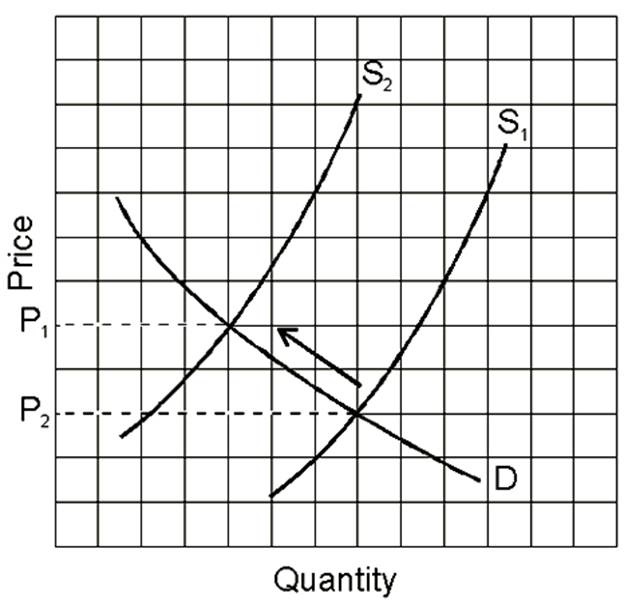The monopolistically competitive seller's demand curve will become more elastic with
A. a smaller number of competitors.
B. a greater degree of product differentiation.
C. a larger number of competitors.
D. more significant barriers to entry.
Answer: C
You might also like to view...
A firm's cost of production is determined by all of the following except
A) the productivity of its workers. B) the amount of corporate taxes it must pay on its profit. C) the technology used to produce its output. D) the cost of raw material used in production.
In the long run, wages and prices are considered to be: a. fixed
b. sticky. c. flexible. d. unstable.
In a market economy with no government intervention, the HOW to produce question is based on
A. Production costs alone. B. Consumer demand. C. Environmental considerations only. D. Production costs plus environmental considerations.
This graph shows what causes

A. cost-push inflation.
B. demand-pull inflation.
C. neither cost-push nor demand-pull inflation.